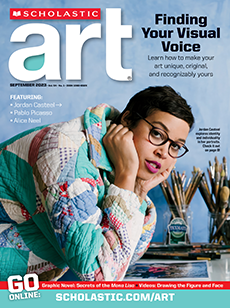You’ve seen how artists like Hokusai use prints to celebrate the world around them. Now it’s your turn to design a composition using shape, carve a block, and make your own print.
sketch paper
graphite pencil
carbon paper
linoleum or other carving surface blocks
permanent marker
linoleum-cutting tools with a variety of blades
block printing inks
Plexiglas
rubber brayers
printing paper
barens
